20 Different Types of Maple Trees: With Pictures & Info
-
Chris Dinesen Rogers
- Last updated:
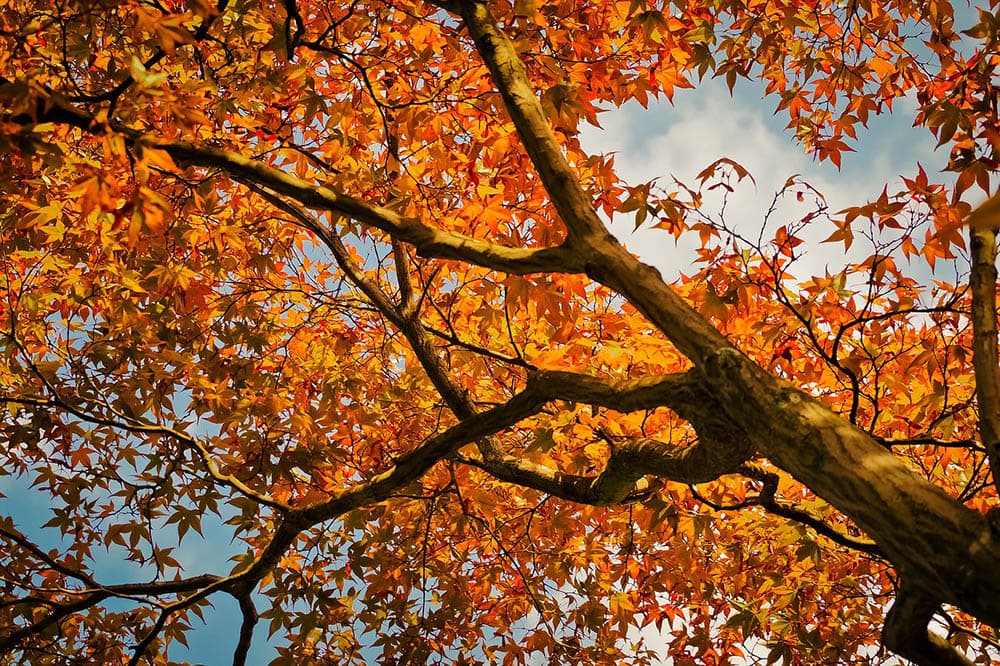
Maples are the quintessential backyard tree. Undoubtedly, you’ve climbed a few of them as kids. They are also common elements of our forest, and the Red Maple is the number one species by number. It and Sugar Maple are two of ten that makeup 45% of the total volume. These trees serve many purposes, from a high-quality timber source to ornamental additions to yummy maple syrup.
There are over 130 types of maple trees around the world. The United States is home to 45 species, both native and introduced. Numerous cultivars also exist that are selectively bred for several characteristics, such as size, profile, and color. Our round-up includes some of the most popular and recognizable of these trees.
The 20 Different Types of Maple Trees
1. Sugar Maple (Acer saccharum)
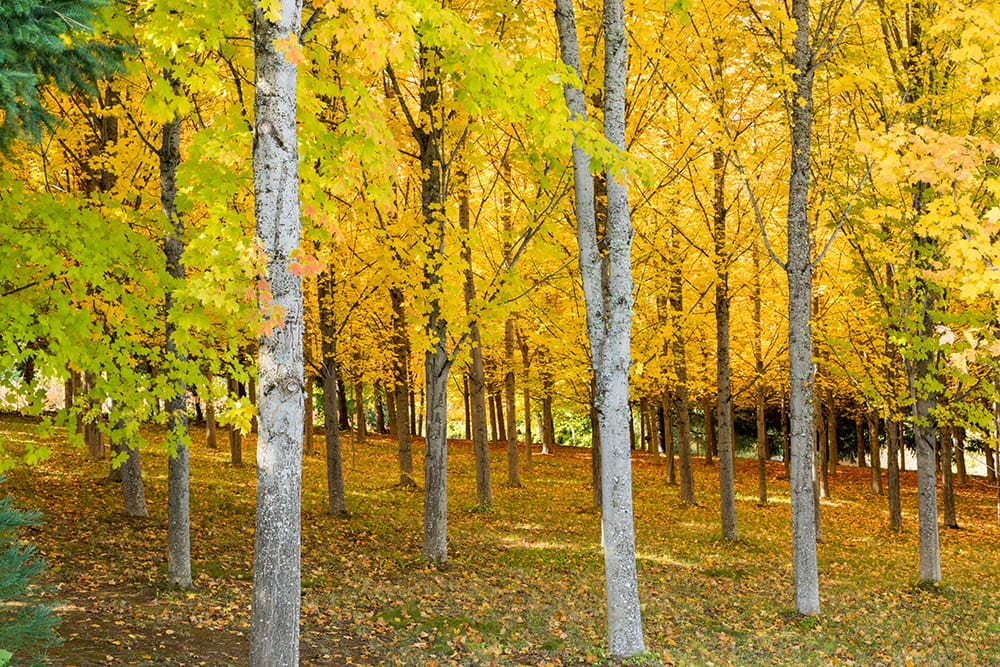
The Sugar Maple is probably the most valuable and popular of the genus Acer. It produces the famous syrup, and the lumber is vital for various products, including baseball bats and guitars. It is native to various provinces in Canada, Missouri, and Virginia. The tree can reach 80 feet tall or more, with diameters up to 3 feet.
2. Silver Maple (Acer saccharinum)
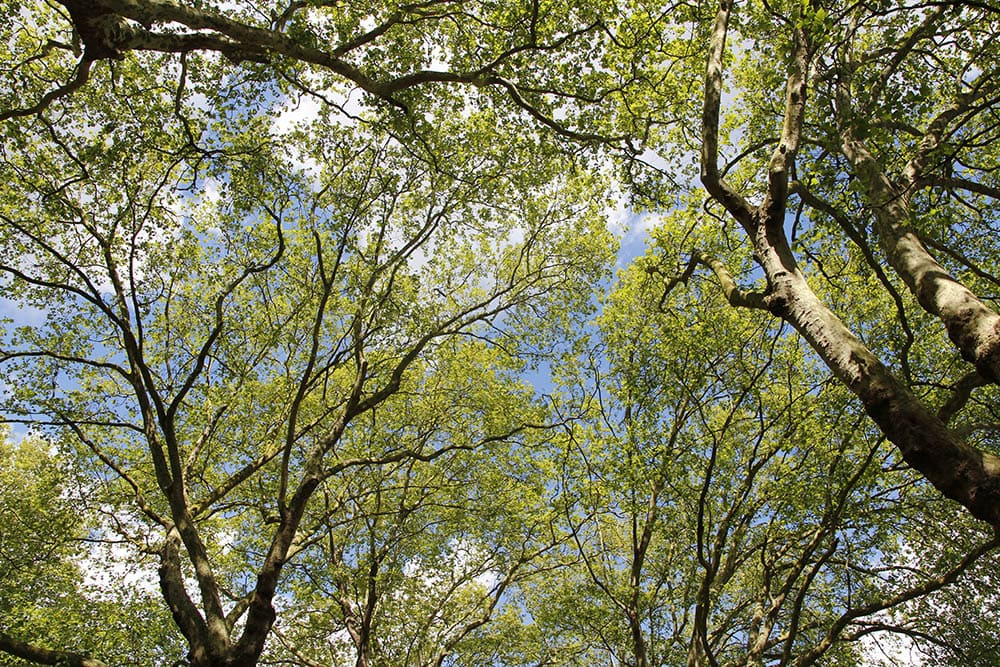
The Silver Maple gets its name from the lighter color of the undersides of its leaves that resemble the color. While it also produces sap, it isn’t nearly as sweet as our previous example. It’s also not as valuable since the wood is sometimes brittle. Hence, its other moniker is the soft maple. Nevertheless, it is still valuable as a shade tree with beautiful fall colors and ornamental variety.
3. Japanese Maple (Acer palmatum)
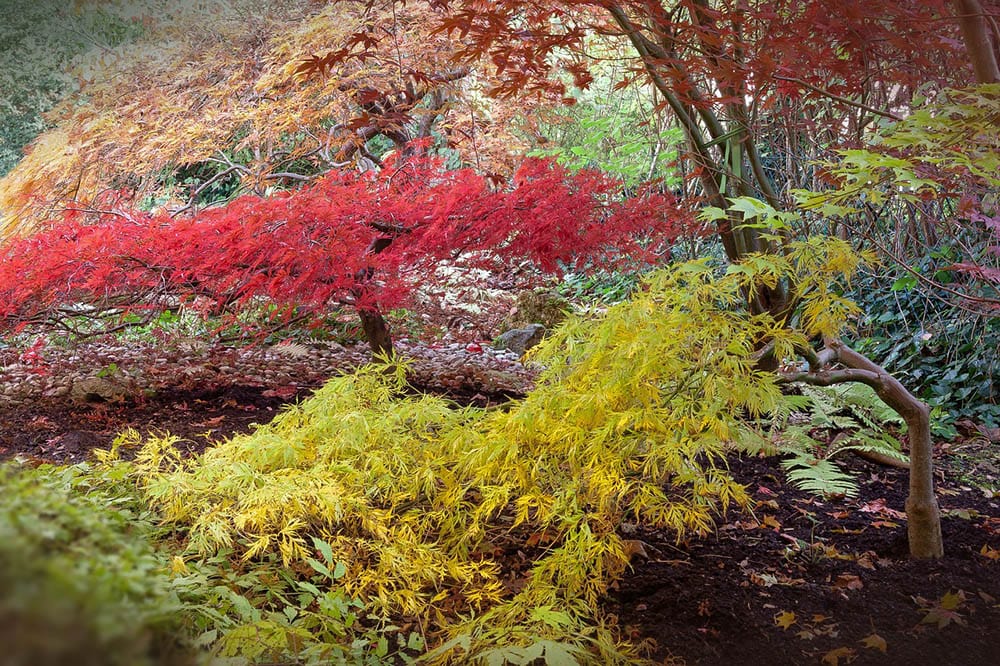
As you may expect, the Japanese Maple isn’t native to the United States. Instead, it was introduced. Horticulturalists have selectively bred it for various ornamental cultivars. Probably no other species has seen so many variations, with over 1,000 cultivars grown worldwide. It is even a popular species for bonsais.
4. Norway Maple (Acer platanoides)
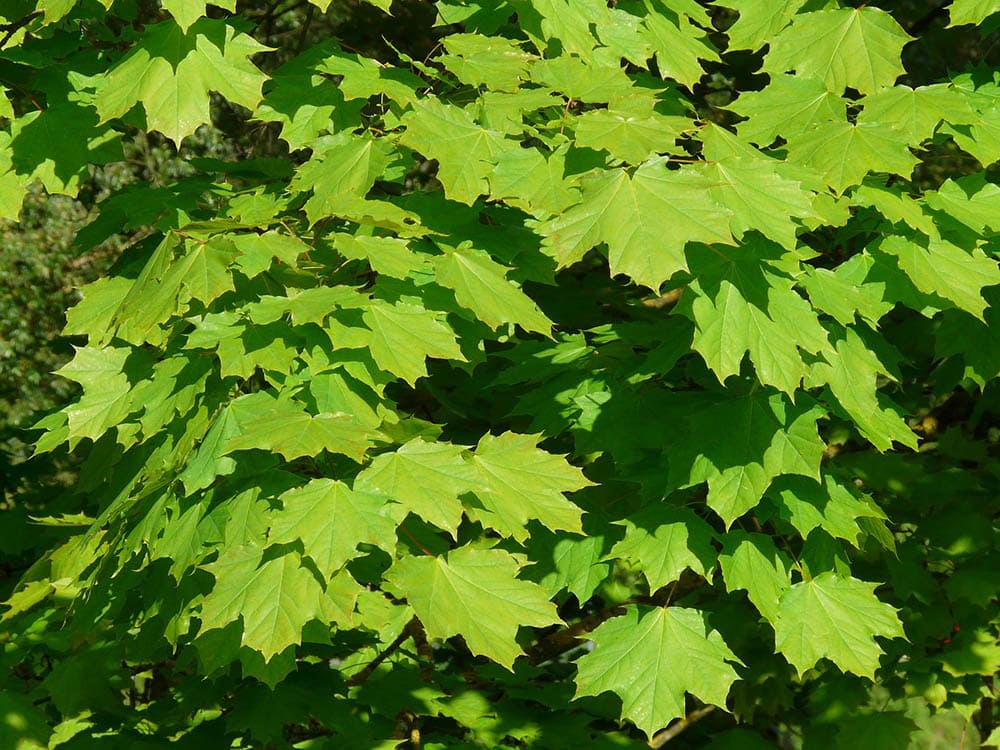
The Norway Maple is a Eurasian species introduced to the United States in the mid-1700s. While it is a striking ornamental tree, it is also invasive. It is a pioneer species, which means it can inhabit bare ground before other plants. The tree is also fast-growing, which is good news if you want shade. It’s less beneficial to places where it can take over the forest canopy.
5. Striped Maple (Acer pensylvanicum)
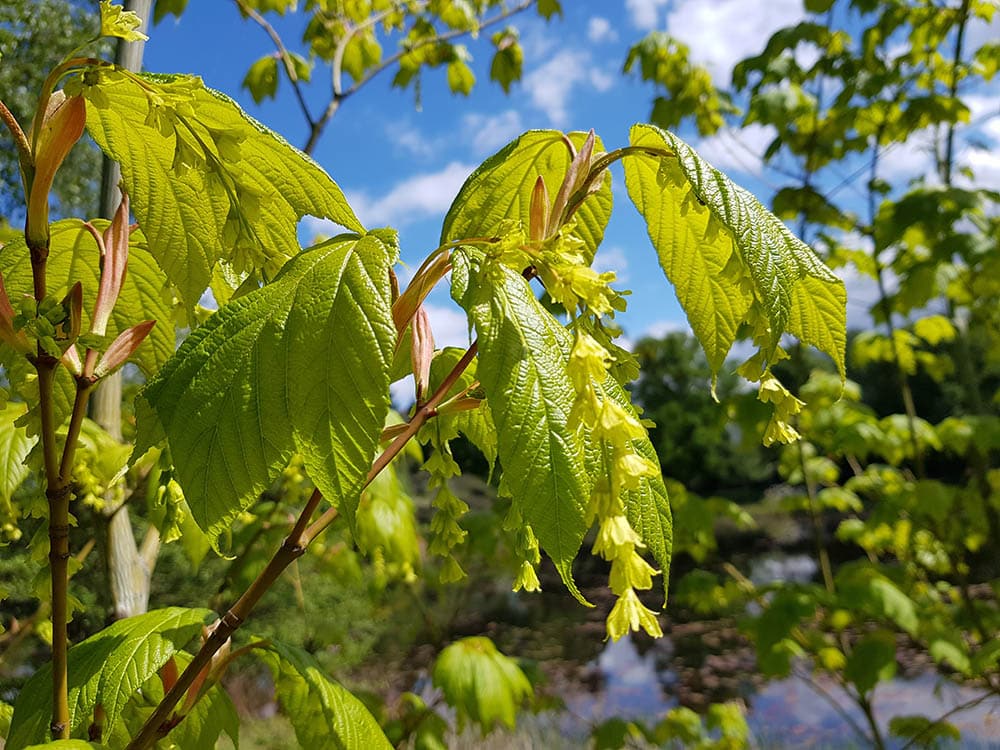
The Striped Maple lives primarily on the East Coast of the United States and Canada. It isn’t as tall as others on our list and only grows up to 15 feet. It has some commercial use for wood making, and wildlife also benefits from its presence in the forest. That can explain one of its many nicknames, Moose Maple. Interestingly, this tree has reputed medicinal properties, too.
6. Rocky Mountain Maple (Acer glabrum)
As its name suggests, the Rocky Mountain Maple is a western species in the United States and Canada. It is not a large tree and only grows up to 30 feet. A lot is unknown about it because of its remote habitat. However, it is an important wildlife species. Like many plants in these regions, the Rocky Mountain Maple needs fire as part of its ecology.
7. Trident Maple (Acer buergerianum)
The Trident Maple exists as an introduced species in the United States. It is widespread in the US and abroad. However, its native range is in China and Japan, where it is also a bonsai plant. Like many species in this genus, the Trident Maple has a prominent place in traditional Chinese medicine.
8. Hedge Maple (Acer campestre)
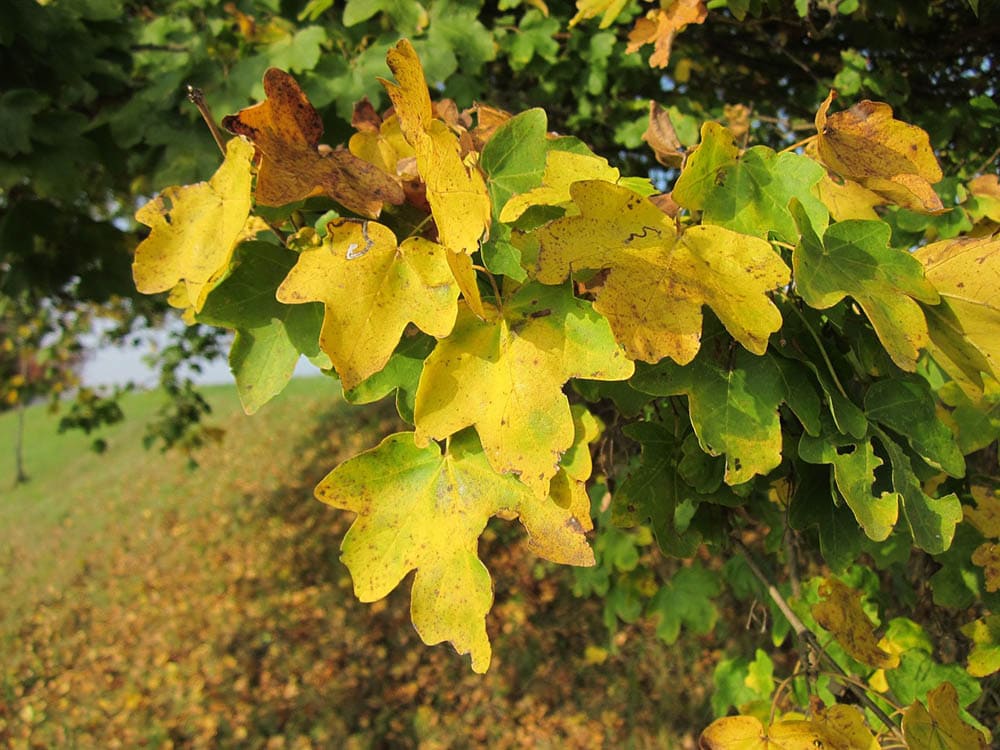
The Hedge or Field Maple is another Eurasian species that has found its place in gardens worldwide. It prefers warmer areas with well-drained, calcareous, or alkaline soils. This tree can grow up to 45 feet in the right growing conditions. It stands out for its beautiful fall colors and foliage. The species is stable for the most part but is vulnerable to the Asian Longhorned beetle.
9. Vine Maple (Acer circinatum)
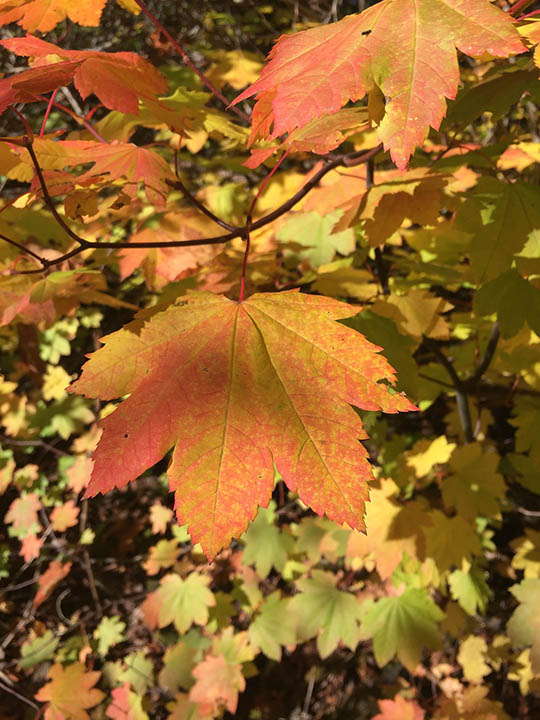
The Vine Maple lives primarily in the Southwest, with some specimens in Canada. It exists in thickets in the wild, where it can provide welcome cover for wildlife. It isn’t as important commercially, unlike many maple species. However, it is an attractive ornamental addition, where it finds its greatest use outside the forest.
10. Mountain Maple (Acer spicatum)
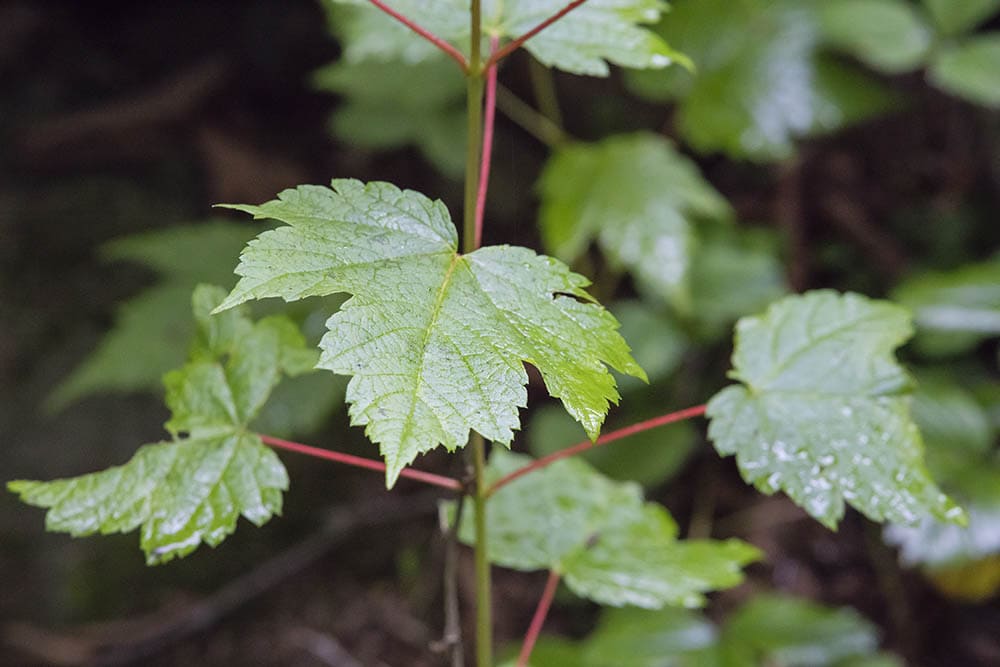
The Mountain Maple is something of a misnomer since it usually gets less than 20 feet. You’ll typically find it in moist woods or botanical gardens. Its wood is strong, making it an excellent choice for fine woodworking. It provides cover and food for wildlife, making it ecologically significant. Like others of its kind, the tree is a sweet syrup source.
11. Amur Maple (Acer japonicum)
The Amur Maple is not native to the United States. That honor belongs to Japan. Nonetheless, it is a prized species with captivating synonyms, such as the Downy Japanese Maple. It has a lot going for it as an ornamental species. It’s attractive, with spectacular fall foliage. The tree isn’t very tall, either, at only 15 feet. It’s no wonder you’ll see it in many gardens worldwide.
12. Red Maple (Acer rubrum)
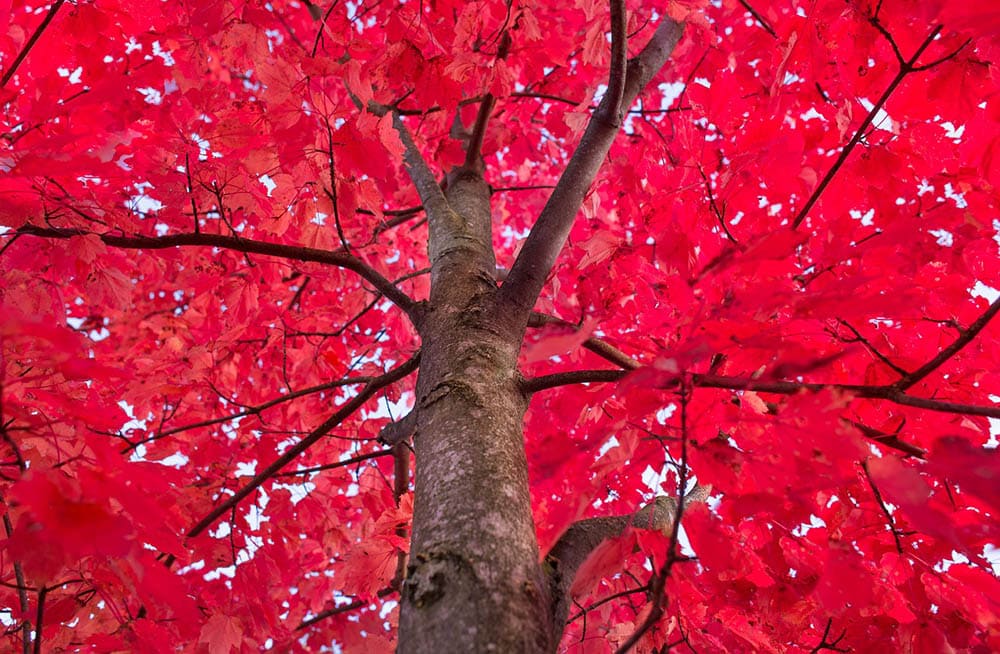
The Red Maple is another tall, native species, reaching heights of 70 feet or more. Like the Silver Maple, its wood isn’t as hard as other varieties. Nevertheless, people still use it for furniture and firearms. Its range is primarily east of the Mississippi River. It is an abundant tree in mixed deciduous forests and a survivor with a long lifespan.
13. Three-Flowered Maple (Acer triflorum)
The Three-Flowered Maple is native to China, North Korea, and South Korea. It’s not the most familiar species outside of official collections. In the wild, it is a forest dweller that prefers well-drained soils. It is also tall and grows up to 75 feet. Like other maples, this one puts on a show for the fall color display.
14. Coral Bark Maple (Acer palmatum Sango-kaku)
The Coral Bark Maple is appropriately named because it puts on a show the entire year. Its plant hardiness zone range of 5–8 makes it easy to enjoy the colors in many places. While its name implies a salmon hue, it shines in its golden palette instead. The theme continues through its foliage and bark. This maple will find an excellent spot as a focal point.
15. Black Maple (Acer nigrum)
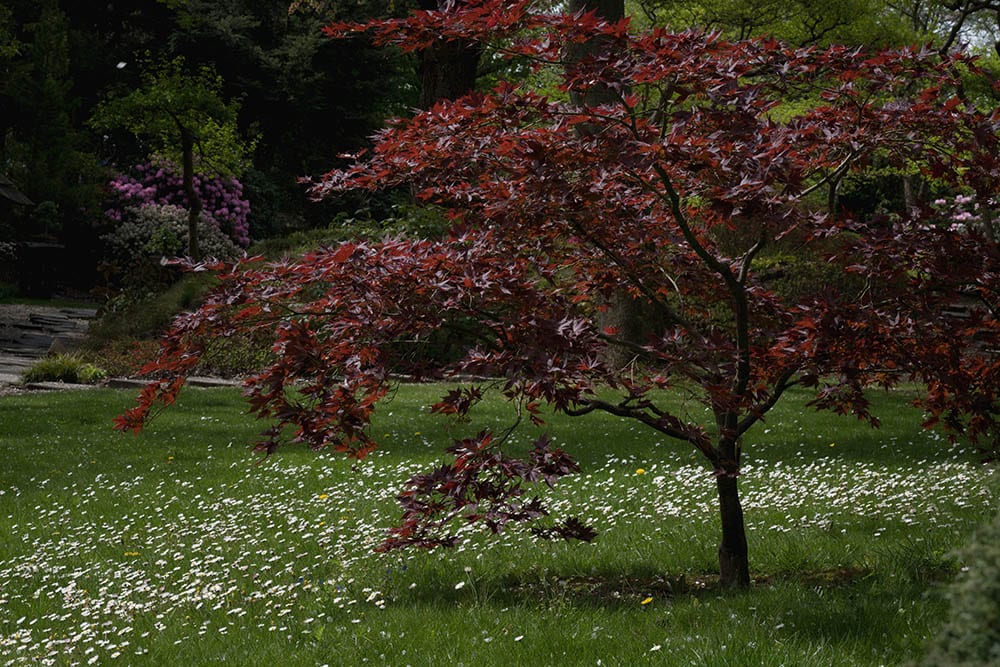
The Black Maple lives east of the Mississippi River in hardwood forests. It is slow-growing and long-lived and sometimes tops the 200-year mark. Not surprisingly, it is also hardy and tolerant of extreme environmental conditions. The tree produces syrup, is used to make baseball bats, and is an ornamental addition in landscaping designs.
16. Bigtooth Maple (Acer grandidentatum)
The Bigtooth Maple lives west of the Mississippi River and is native to the lower 48 states. It’s shorter and stockier than many other maple species. Its scientific name is a reference to the tree’s leaves. The lobes you usually see with these trees are more prominent—hence, the moniker. It has a presence that is unmistakable with its large crown that captures your attention.
17. Douglas Maple (Acer glabrum var douglasii)
The Douglas Maple has a tall but slender profile, with a height of just over 30 feet and a 1-foot diameter. You’ll find this tree in the Pacific Northwest and Canada. Its standout feature is its golden fall leaves. This species prefers it cool, going down to Plant Hardiness Zone 4. It’s a unique representative of the genus, with leaves that look different from what you’d expect from a maple.
18. Paperbark Maple (Acer griseum)

The Paperbark Maple takes a page from the Paper Birch’s playbook with its unique bark. It’s also an endangered species in its native China. It exists in pockets in the wild there. It’s a different story in the United States, where it’s more common, perhaps because of its beauty. This tree loves the sun and doesn’t tolerate shade.
19. Sycamore Maple (Acer pseudoplatanus)

The Sycamore Maple is a European species that is an excellent timber source. It exists across the globe in introduced populations. It’s a long-lived tree that can survive up to 300 years. However, it needs a reliable water source to thrive. On the downside, it can become invasive since it can tolerate less-than-ideal air quality conditions.
20. Southern Sugar Maple (Acer floridanum)
We end as we began with the Southern Sugar Maple. It’s smaller than the Sugar Maple, both in size and color. As the name implies, it’s a tree of the southeastern United States. It’s a tolerant species, which may come into play with an expanding range of climate change. Its wood is used for woodworking, but it’s not used often as an ornamental tree in landscaping.
Final Thoughts
As you’ve seen, Maples tell a diverse story. They are valuable on several scores, whether as a landscape addition or for a more utilitarian purpose in the sawmill. Horticulturists have selectively bred many species for their beauty. Often, they are survivors to the point of being invasive. However, they are a vital species that provide the world with beautiful foliage, habitats for wildlife, and numerous products.
Looking for more information on different trees? Try:
- Different Types of Oak Trees
- Different Types of Christmas Trees
- Different Types of Palm Trees
- Related Read: The 6 Types of Maple Trees in Michigan
Featured Image Credit: Pixabay
Contents

